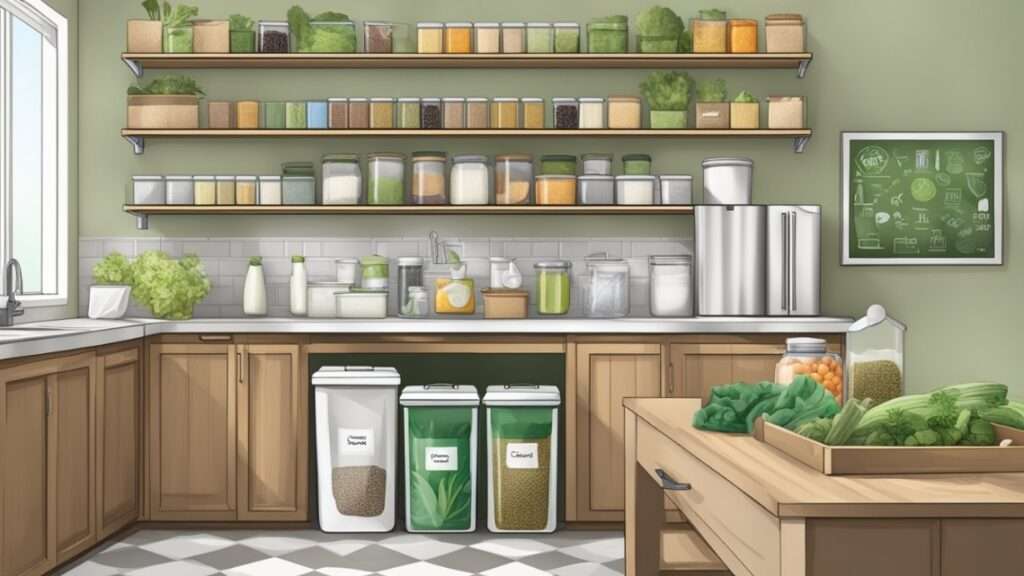Creating a zero-waste kitchen is a powerful step toward sustainable living, reducing your environmental impact while keeping your space organized. At Leave It to Alexandra, we help Southern California homeowners achieve clutter-free, eco-friendly homes with our compassionate, confidential, and judgment-free approach. In this guide, we’ll share 10 practical tips to organize a zero-waste kitchen, making your home more sustainable and efficient.
Declutter to Start Your Zero-Waste Kitchen Journey
Begin by decluttering your kitchen—remove expired food, duplicate utensils, or items you rarely use. Donate what’s still usable and recycle what you can. A clutter-free kitchen is the foundation of a zero-waste kitchen, making it easier to focus on sustainable habits without excess stuff getting in the way.
Switch to Reusable Alternatives
Replace single-use items like plastic wrap, paper towels, and disposable containers with reusable options. Use beeswax wraps, cloth napkins, and glass jars instead. These alternatives reduce waste, save money over time, and keep your kitchen organized by minimizing clutter from disposable products.
Set Up a Composting System
Composting is key to a zero-waste kitchen. Set up a small compost bin for food scraps like vegetable peels, coffee grounds, and eggshells. Use a countertop bin with a lid to control odors, and empty it into an outdoor compost pile or a local composting service. Composting reduces landfill waste and creates nutrient-rich soil for gardening.
Buy in Bulk to Reduce Packaging
Purchase pantry staples like grains, nuts, and spices in bulk to minimize packaging waste. Bring your own reusable bags or jars to bulk stores in Southern California, like Sprouts or Whole Foods. Store bulk items in labeled glass containers to keep your kitchen organized and plastic-free.
Use Multi-Functional Tools to Minimize Clutter
A zero-waste kitchen benefits from minimalism—opt for multi-functional tools to reduce the number of items you own. A good chef’s knife can replace multiple gadgets, and a single pot can serve various cooking needs. This approach keeps your kitchen streamlined while reducing waste from unnecessary purchases.
Store Food Properly to Prevent Waste
Prevent food waste by storing items correctly. Keep herbs in a glass of water, store grains in airtight containers, and use the crisper drawer for vegetables. Proper storage extends the life of your food, reducing waste and keeping your kitchen organized with a clear inventory of what you have.
Plan Meals to Avoid Overbuying
Meal planning helps you buy only what you need, a core principle of a zero-waste kitchen. Plan your weekly meals, make a shopping list, and stick to it. This reduces impulse buys and ensures you use up perishables before they spoil, keeping your kitchen efficient and waste-free.
Repurpose Leftovers Creatively
Instead of tossing leftovers, repurpose them into new meals. Turn yesterday’s roasted veggies into a soup or use stale bread for croutons. Store leftovers in clear glass containers so you can see what’s available. This habit minimizes food waste and keeps your fridge organized and clutter-free.
For more zero-waste tips, check out this guide
Organize Your Kitchen for Efficiency
An organized kitchen supports zero-waste goals. Group similar items together—spices in one area, baking supplies in another—and use drawer dividers for utensils. At Leave It to Alexandra, our Home Decluttering & Organizing services help Southern California homeowners create efficient kitchen systems that support sustainability.
Discover our Home Decluttering & Organizing services
Use Non-Toxic Cleaning Products
Switch to eco-friendly, non-toxic cleaning products to maintain your zero-waste kitchen. Use vinegar, baking soda, or biodegradable soaps like Dr. Bronner’s for cleaning. These products reduce harmful waste, keep your kitchen safe, and align with a sustainable lifestyle, ensuring a healthier home environment.

Organize Your Zero-Waste Kitchen with Leave It to Alexandra
Organizing a zero-waste kitchen helps you live sustainably while keeping your space clutter-free and efficient. With these 10 tips, you can reduce waste and create a kitchen that supports your eco-friendly goals. At Leave It to Alexandra, we’re here to support Southern California homeowners with our compassionate, confidential, and judgment-free approach. Ready to go zero-waste? Book a free consultation with us today!
